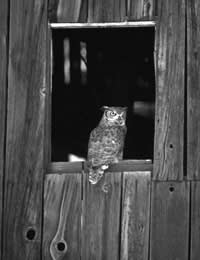Capturing a Mood

On a very basic level photographs can be divided into two types. The first type tends to be produced in a studio or a set, and tends to involve a fair amount of equipment such as lighting set-ups. This type of photography results from the photographer’s vision of exactly how he would like to see an image turn out; in fashion photography, for example, the photographer might work with several designers and creative directors in order to create a concept and make it a photographic reality. These types of photograph create their own world, separate from the real world but an intrinsic part of it as they are captured on film and therefore leave the imagination of the photographer and become a reality.
Capturing the Atmosphere
The second type of photography is far more widely practiced. This type involves capturing real events as they happen; the intention is not to create a new reality, but to record and represent our reality, generally in an aesthetically pleasing manner. Many genres and styles of photography fall into this category, perhaps the most notable being candid and photojournalism. If you wish to pursue this style of photography, then perhaps the most important skill that you will need to learn is that of capturing the mood of both the environment you are in and, if relevant, the subject that you are shooting.If you are photographing out and about, your options with regard to things like lighting will be limited. You may have access to a flash, but in many cases this in itself will alter the mood as it may draw attention and change peoples’ behaviour. However, using factors such as camera angle, and adjusting depth of field and exposure time, you can create effects which convey a mood or atmosphere.
The work of Andre Kertesz is an excellent illustration of this; his photographs, many of which were taken from slanted and unusual angles, have a definite sense of tension and unease. This can be replicated easily; jagged edges, corners, and slanted angles all bear connotations of suspense and tension. Similarly, you might find it useful to look at shadows. Often, photographing an individual’s shadow can be just as effective as photographing their actual body, and can be hugely successful in establishing visual tension.
Depth of Field
Shutter speed and aperture are also valuable tools when trying to capture the mood. Creating a narrow depth of field, for example, will throw much of the frame out of focus, and can create interesting, dreamlike effects. This tends to work particularly well for photographs of children, where soft focus brings connotations of warmth and safety. Alternatively, if you are photographing a particularly stark cityscape, for example, you might use a wide depth of field in order to maintain the sharp edges and therefore reflect the atmosphere of the place you are photographing.If you have the ability to do so, then creative use of lighting is one of the most important tools for establishing a mood. A few strong lights trained directly on your subject can create a harsh, uneasy atmosphere. This can be entirely reversed, however, with the attachment of devices for diffusing light, such as brolleys or reflectors. These create a much softer quality of light, which in itself conveys a softer, less threatening tone to the photograph.


Re: Photography Copyright Law
Hello, My name is Kimberly Wood and I run a business selling movie DVDs, and Blue-Rays. Both music and movies for me have always…
Re: Storing Your Photos Online
Flickr is fine just as a photo site, but plenty of people put pictures in albums on Facebook, for example, which is one way to store…
Re: Developing Your Own Film and Darkroom Basics
Hi, Please send me the details of new set up of digital color lab and having any expenses and cost of…
Re: What is the Copyright on Old Photographs to Use as Calendars?
Hi, I have an old photograph I got at a flea market, (a snapshot) that I want to use…